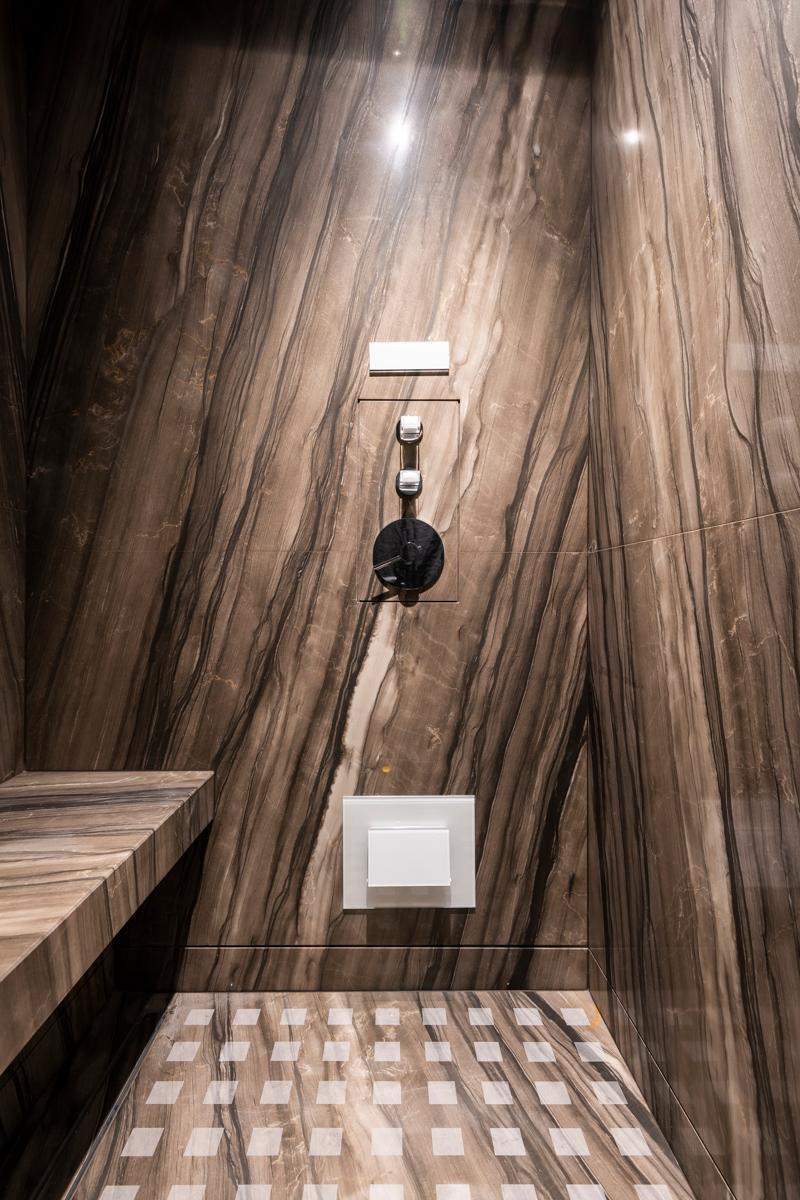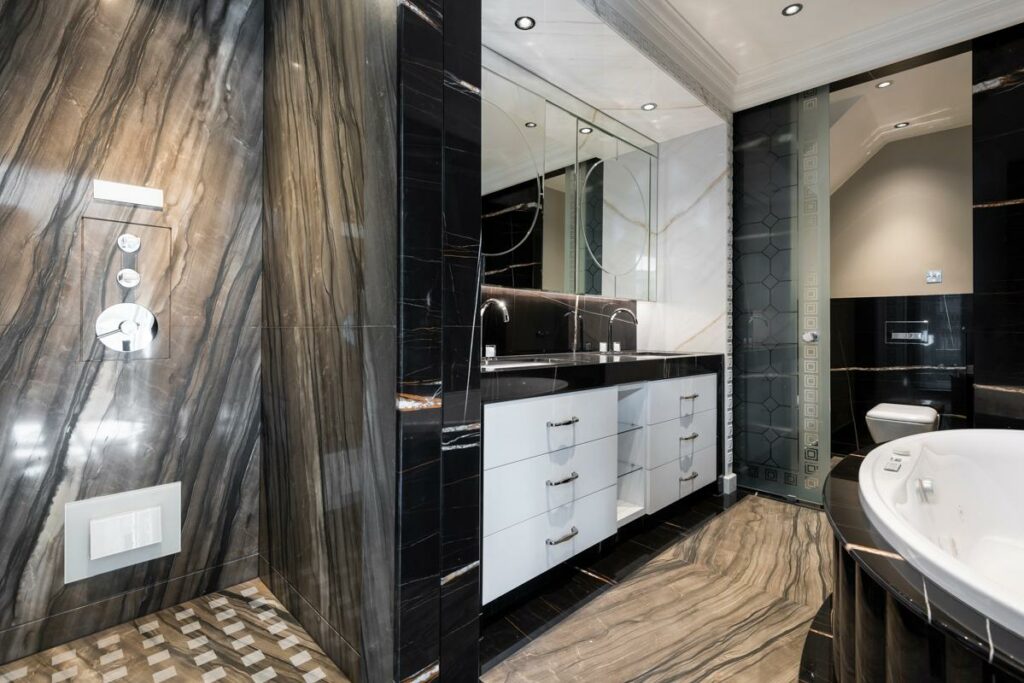This revolution did not originate within the stone industry. It began with a partnership with those who face the most extreme conditions on a daily basis: the aerospace sector.
Nanocoating technology was developed within Dual Use Technology programmes in collaboration with NASA, with the goal of creating coatings capable of withstanding some of the most challenging conditions imaginable, including thermal shocks ranging from -80 °C to +600 °C.
From this research emerged a new generation of surface treatments for marble: molecular barriers that are completely invisible yet remarkably effective. Coatings that do not cover, plasticise or alter the appearance or feel of the stone.
They operate on a scale that is almost impossible to perceive: the realm of nanometres.
The most effective innovation is the one you don’t see.
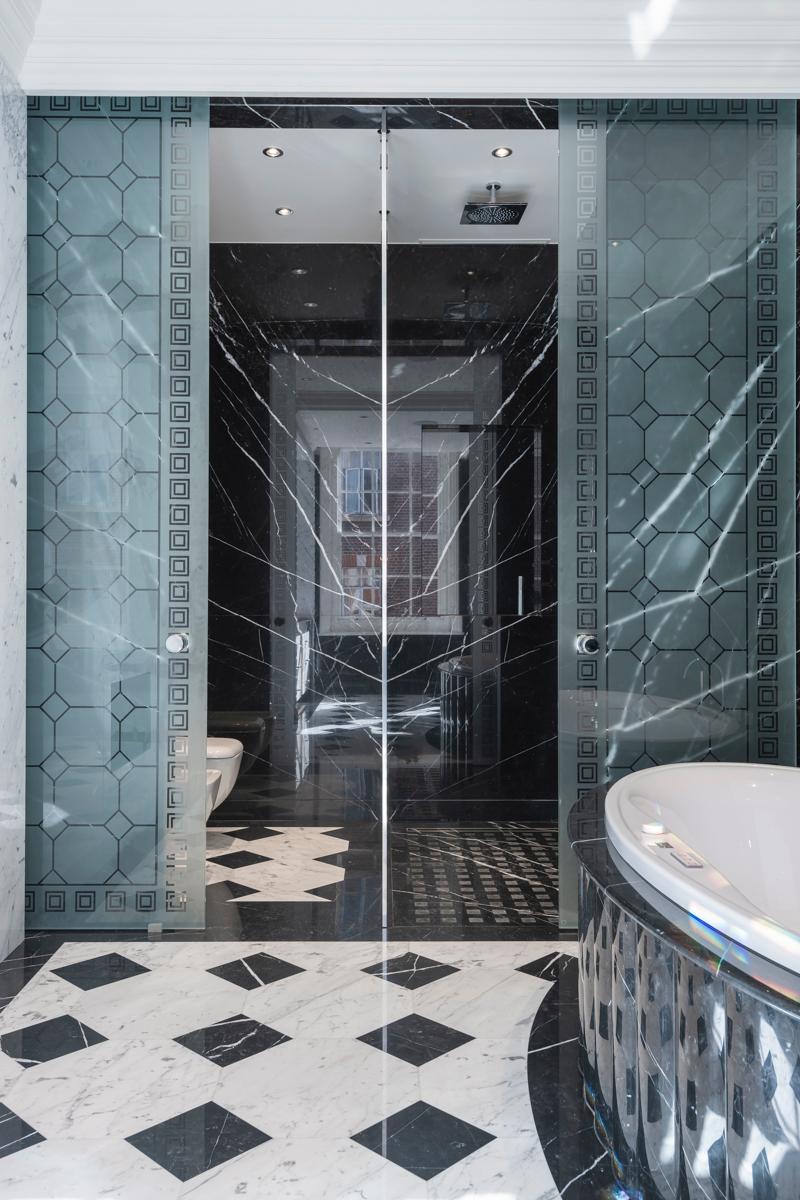
A nanotechnological coating has a thickness between 200 and 500 nanometres — roughly a thousand times thinner than a human hair.
To put it into perspective: if a marble slab were the size of a football field, the coating would be as thin as a sheet of cigarette paper.
And yet it is precisely at this imperceptible scale that the surface changes its behaviour.
The application creates a molecular lattice that:
- neutralises acidic substances
- makes the surface hydrophobic and oleophobic
- increases the water contact angle for rapid runoff
- prevents the absorption of oils, pigments and organic agents
- withstands extreme thermal shocks, freezing, UV exposure and salt spray
- does not alter colour, porosity, gloss or tactile qualities.
It's not a varnish. Not a film. Not a resin.
It is a nanometric modification of the surface, changing the way it behaves without changing what it is.
While traditional marble treatments create a superficial layer that “sits” on the stone — and inevitably wears, scratches or degrades — premium nanocoatings penetrate the material’s structure and form a stable chemical bond.
Not a covering: a molecular integration.
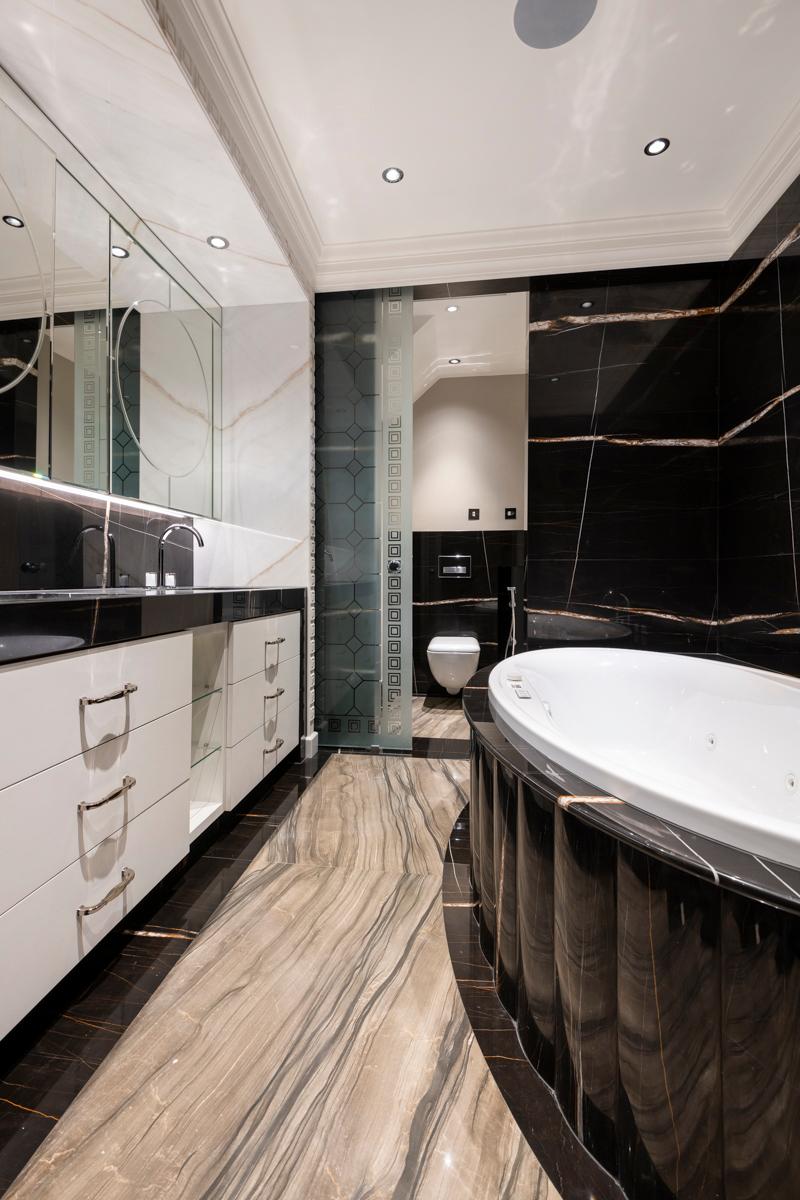
For years, traditional treatments — high-performance impregnators, water- and oil-repellents, technical waxes, sealants — have represented, and still represent, excellent solutions for many applications. They have protected marble and natural stone in residential, hospitality, retail and nautical projects with consistently reliable results.
This new generation does not aim to replace them. It aims to expand what is possible, responding to needs that have emerged in recent years:
- increasingly matte finishes, far more sensitive to acids
- white marbles used in high-traffic or high-exposure areas
- yacht surfaces subjected to extreme environmental conditions
- spa and hammam areas cleaned with aggressive detergents
- a growing demand for minimal maintenance.
Nanocoatings don't erase the past: they build upon its legacy, opening up areas of use that once required significant compromises.
«At Marmi Vrech, surface treatments have always played a fundamental role,», the company explains. «Working with a material as extraordinary as natural stone — one that comes with inherent challenges — we have always searched for the most effective treatment to protect it and ensure long-lasting performance for our clients.»
“How can we preserve marble's identity while eliminating its vulnerabilities?”

The answer has come through systematic work:
- tests on light and dark marbles, calcareous and siliceous stones, polished and matte finishes
- resistance tests against lemon, wine, acidic detergents, cosmetics
- exposure to thermal cycles, UV radiation and salt spray
- aesthetic and tactile post-application assessments.
«After many years of study and experimentation, we identified treatment solutions that offer exceptionally high and stable performance. These are permanent treatments which, when paired with proper maintenance, can provide a definitive response to many of marble’s most common issues — significantly reducing the need for corrective interventions.»
Only technologies that meet non-negotiable criteria are selected:
- true long-term permanence
- total invisibility
- no colour alteration
- no film formation
- compatibility with even highly porous stones
- resistance beyond any traditional treatment currently available.
In every project, our approach remains pragmatic: we don't apply a treatment unless it's truly the best solution for that specific stone, finish or intended use. Each intervention is evaluated case by case, because even the most advanced treatment only works if compatible with the material and context. Our work isn't about promising the impossible, but finding—when it exists—the most effective and durable treatment cycle.
Certified Performance and Durability Guarantees
Unlike other treatments on the market, the nanocoatings used by Marmi Vrech are backed by a robust system of certifications.
These coatings are permanent, not resin-based, non-film-forming, non-altering to the substrate.
Their performance includes:
- resistance to corrosion, abrasion, wear and cleaning agents
- high UV resistance
- high weather resistance
- resistance to hot and cold liquids
- bacteriostatic properties
- anti-sticking, anti-fingerprint and easy-to-clean characteristics
- stability at extreme temperatures (from -80 °C to +600 °C)
- salt-spray resistance.
They are certified according to current UNI, EN and ISO standards, and tested by qualified research institutions such as the University of Trieste – Department of Chemical and Pharmaceutical Sciences.
For kitchen applications, they also carry MOCA certification (suitable for contact with food).
Some formulations, enhanced with photocatalytic technology, also provide antibacterial and antiviral properties — highly valued in hospitality and wellness environments.

What Changes in Practice: New Scenarios for Architects and Contractors
The impact of these treatments goes far beyond reduced maintenance: they open design scenarios that were once considered imprudent or impossible.
Nautical and superyacht sectors:
- Surfaces exposed to salt spray, oils, sunscreen and organic residues become significantly more stable.
- Light-coloured marbles are no longer a risky choice for decks, lounge areas or wellness zones.
- The risk of permanent staining and dulling is dramatically reduced.
Luxury residences:
- Light-coloured floors in entryways without constant worry about marks.
- White marbles in kitchens that are truly lived in, not just photographed? Possible, without anxiety.
- Ensuite bathrooms with delicate stones that remain stable over time.
- Matte finishes that do not accidentally polish.
Hospitality and wellness:
- White marble lobbies with minimal daily maintenance.
- Bar tops unafraid of citrus or acidic cocktails.
- Spa environments where oils and essences no longer compromise surfaces.
- Hammams and experience showers protected from chemical detergents and continuous humidity.
Outdoor and façades:
- UV, anti-smog and acid-rain protection.
- Light-coloured stones that stay bright, even in coastal or urban settings.


Beyond Protection: Systemic Advantages
Acid and stain resistance is only the most visible benefit. Nanocoatings influence the entire life cycle of the material:
- Simplified cleaning – dirt is repelled at a molecular level; cleaning requires less product, time and effort (up to 75% time reduction).
- Reduced maintenance – field data shows up to 70% fewer routine interventions, directly lowering operational costs. This helps amortise the initial investment more rapidly.
- Anti-aging performance – UV protection minimises yellowing and degradation, crucial for outdoor use and sun-exposed interiors.
- Wear resistance – unlike traditional treatments that wear with foot traffic and require periodic reapplication, nanotechnological coatings maintain their properties virtually unchanged over time.
- Economic sustainability – in high-use projects, reduced maintenance combined with increased durability yields a significant medium-term economic benefit.
The Freedom to Be Bold
One of the most surprising side effects of this technological shift is creative freedom.
Architects once hesitant to specify Calacatta Oro for a yacht’s galley. Designers who loved the idea of pink marble in a master bathroom but feared limescale marks. Contractors who declined ambitious specifications to avoid future risks.
The question is no longer “Can we afford to use it?” It becomes:
“Now that we can, how do we want it?”
Bold, decorative marbles — with dramatic veining once considered too delicate — become viable options. Light-coloured stones return to the palette even in intensive-use contexts.
Combinations that once seemed too risky now become legitimate, sustainable design choices.
A special case is that of black marbles, among the most challenging to restore when micro-scratches or halos appear — especially on polished finishes.
With nanotechnological treatments, even these stones gain stable and long-lasting protection, significantly reducing the appearance of marks and maintaining their deep, rich colour.
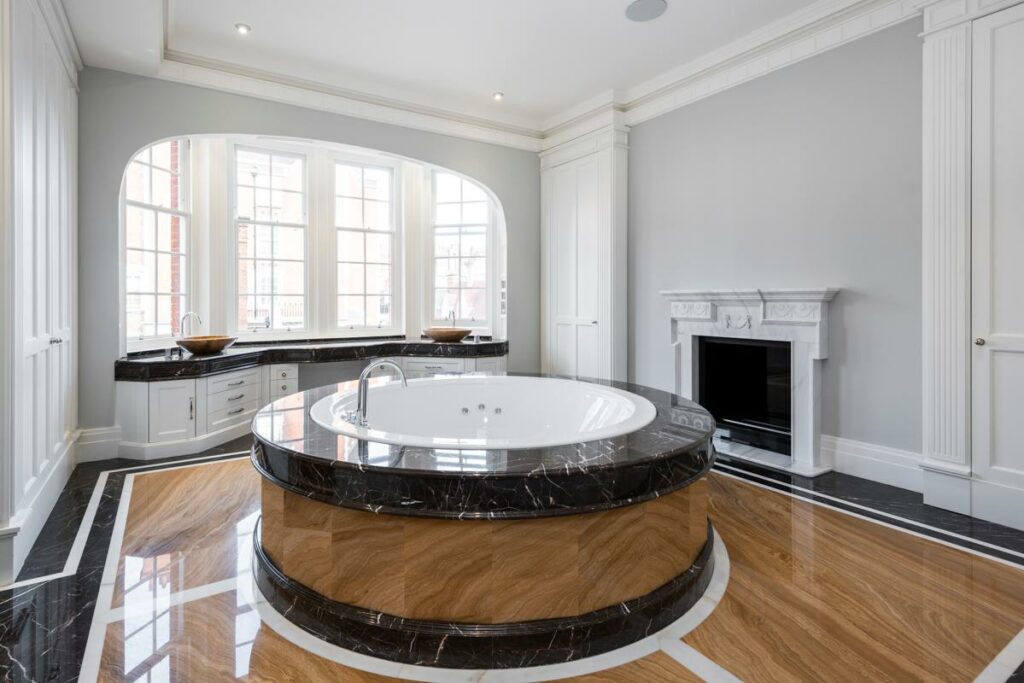
Expertise Makes the Difference
Not all nanocoatings are the same. The gap between consumer-level products and aerospace-derived coating systems is substantial.
Application requires precise expertise: surface preparation, environmental conditions, curing times, and post-application testing all influence the final performance.
This is why Marmi Vrech does not simply supply treated material: they position themselves as a technology partner throughout the entire process — from selecting the most suitable marble, to defining the correct treatment cycle, to advising on long-term maintenance.
The company works with suppliers supported by continuous research and collaborations with public institutions, private organisations and international laboratories, ensuring technologies that are reliable and constantly evolving.
Marble Unlocks Its True Potential
Those marbles architects dreamed of but avoided specifying. Those applications contractors declined out of prudence. Those spaces where natural stone once seemed impossible.
Today, they return to the drawing board.
Marble keeps its nature but sheds many of its vulnerabilities.
It is no longer a choice between beauty and practicality. It is a question of which beauty you want to realise, knowing the technology is finally on your side.
The future of marble treatments is not about compromise. It is about possibility.
